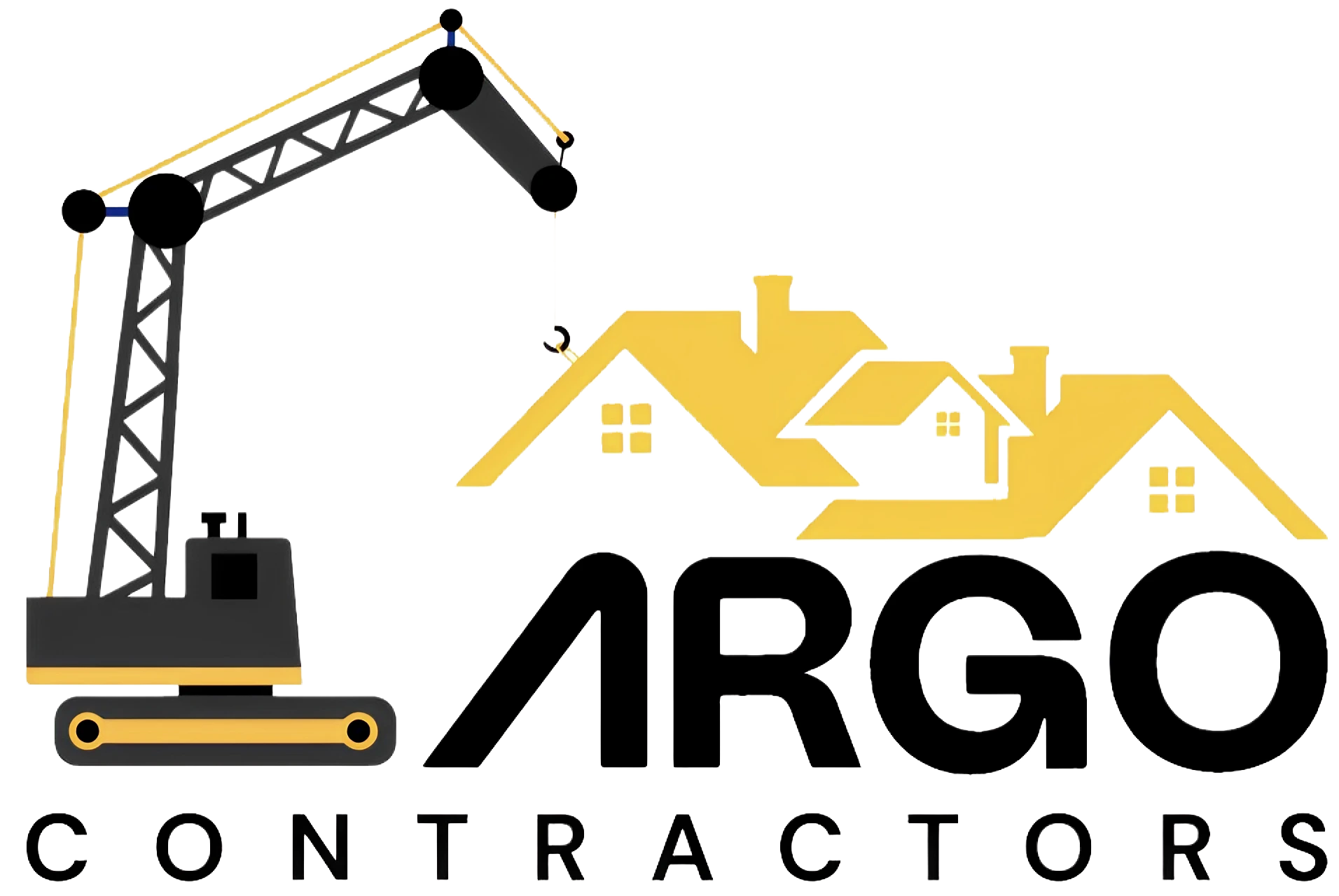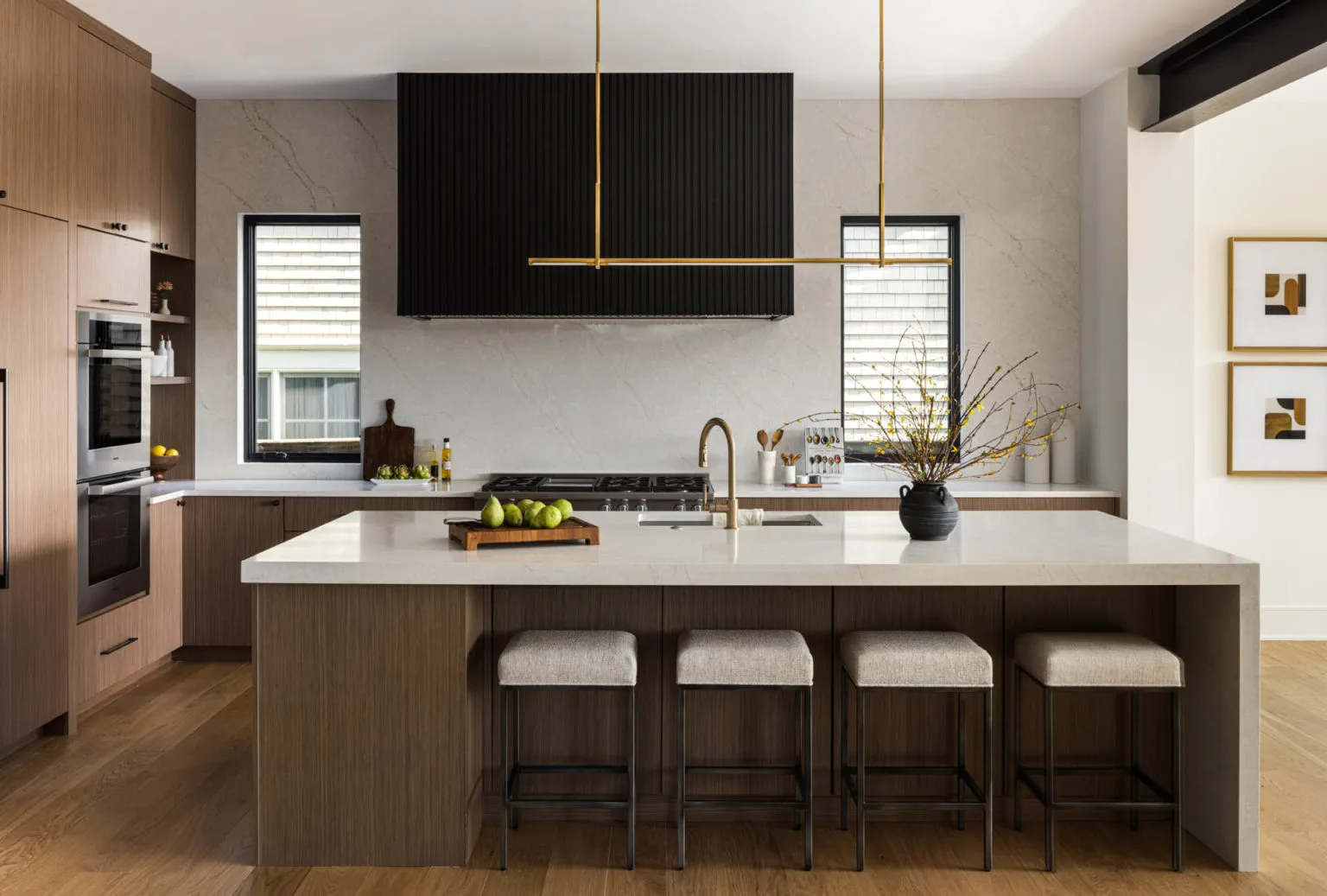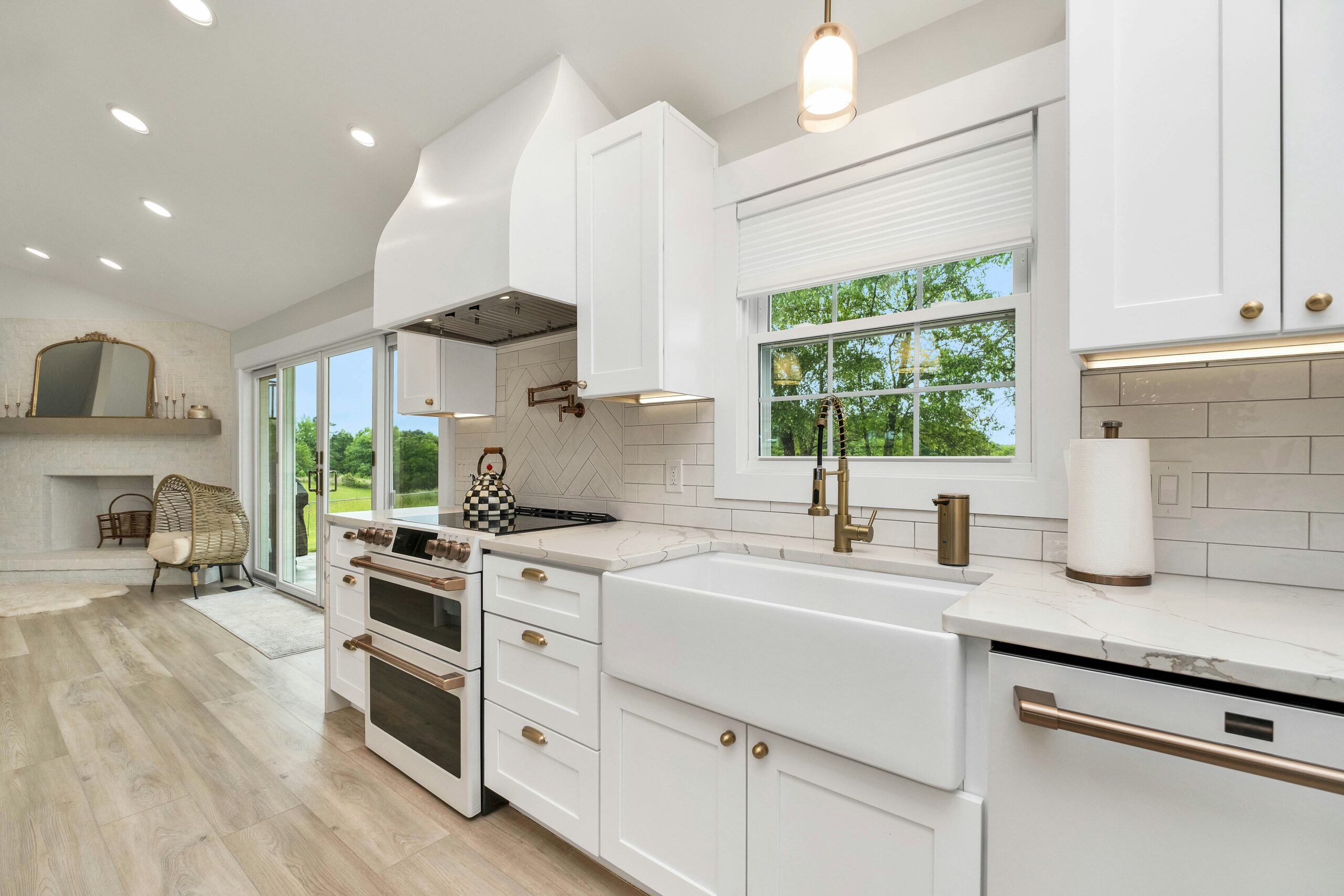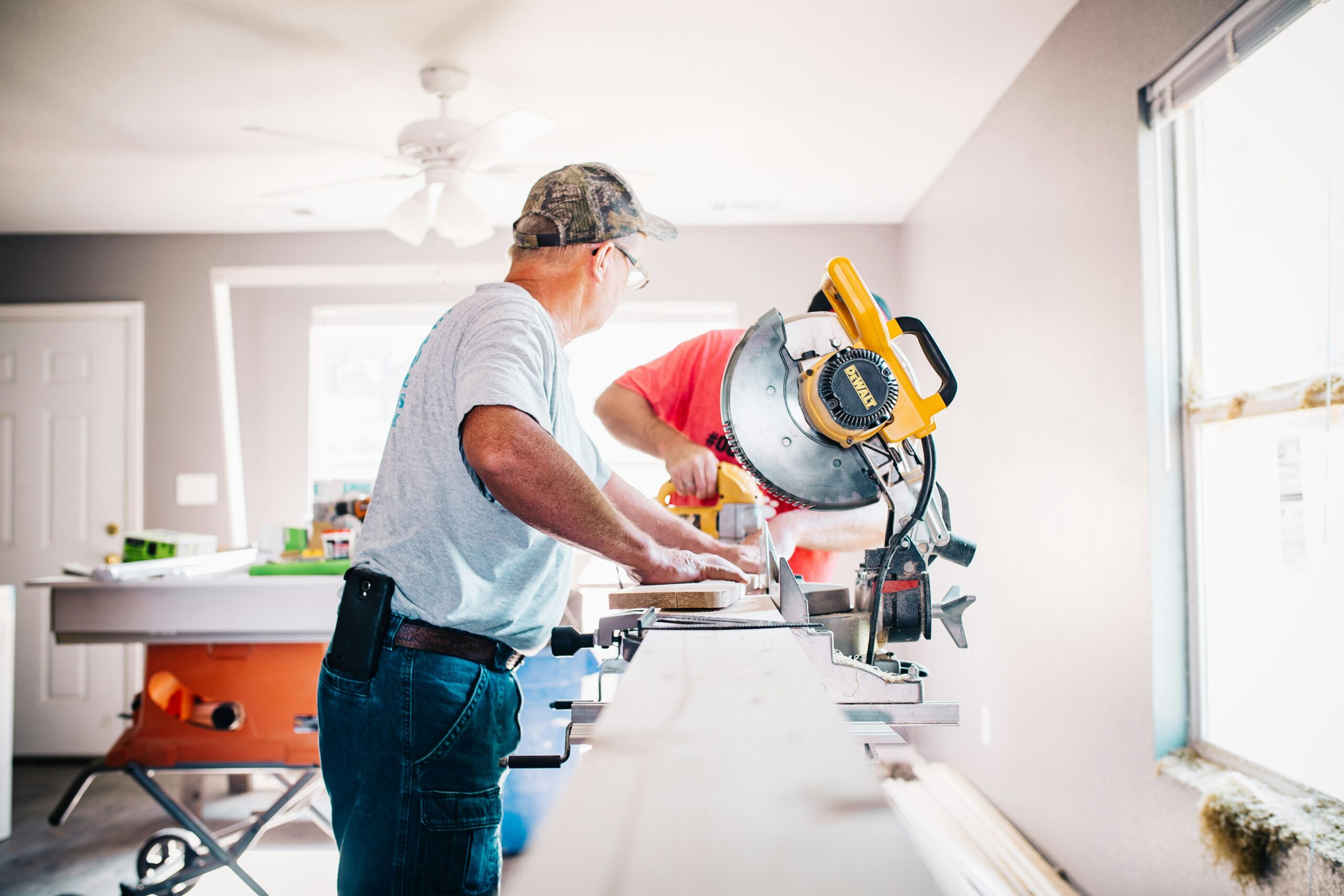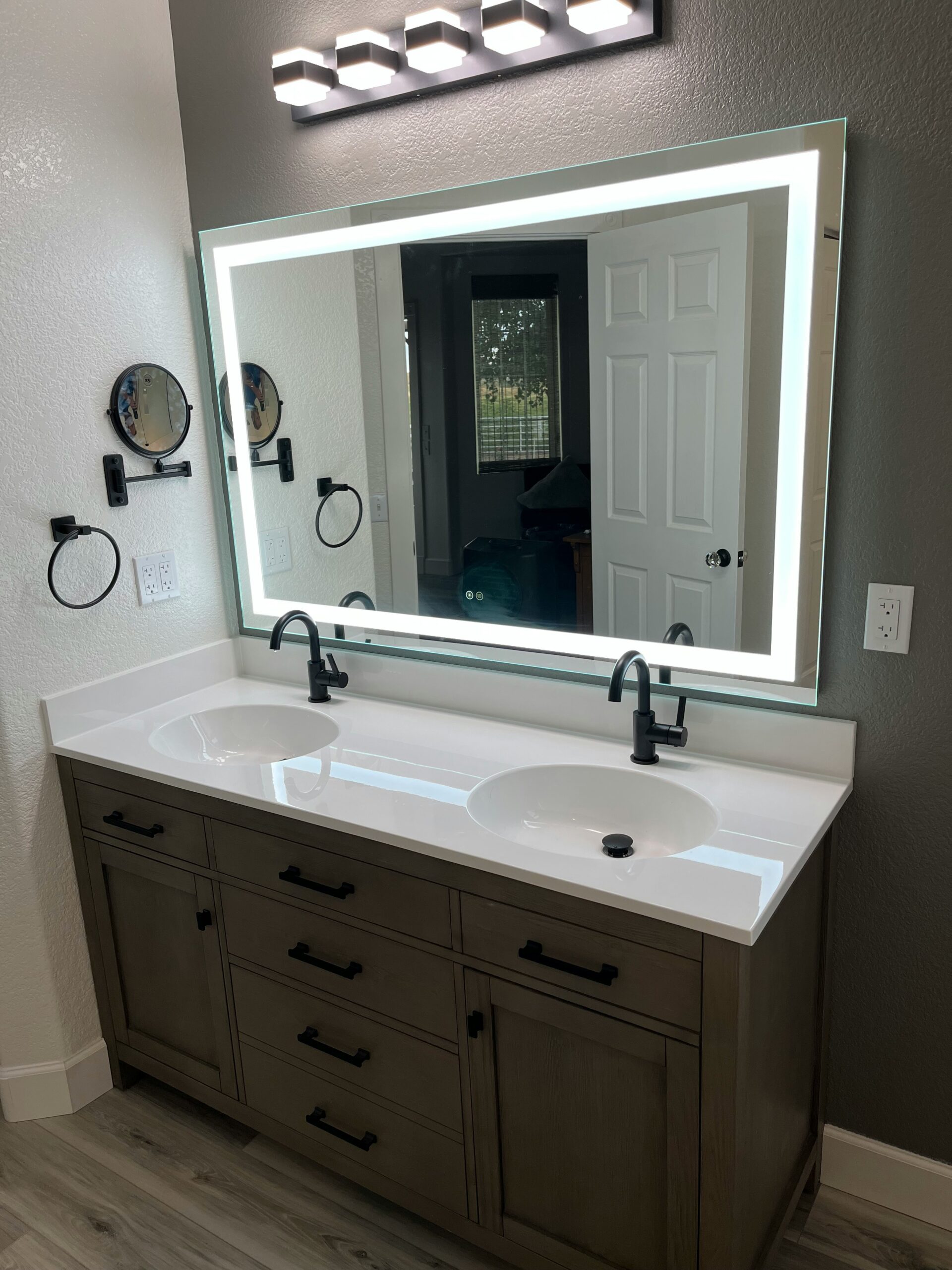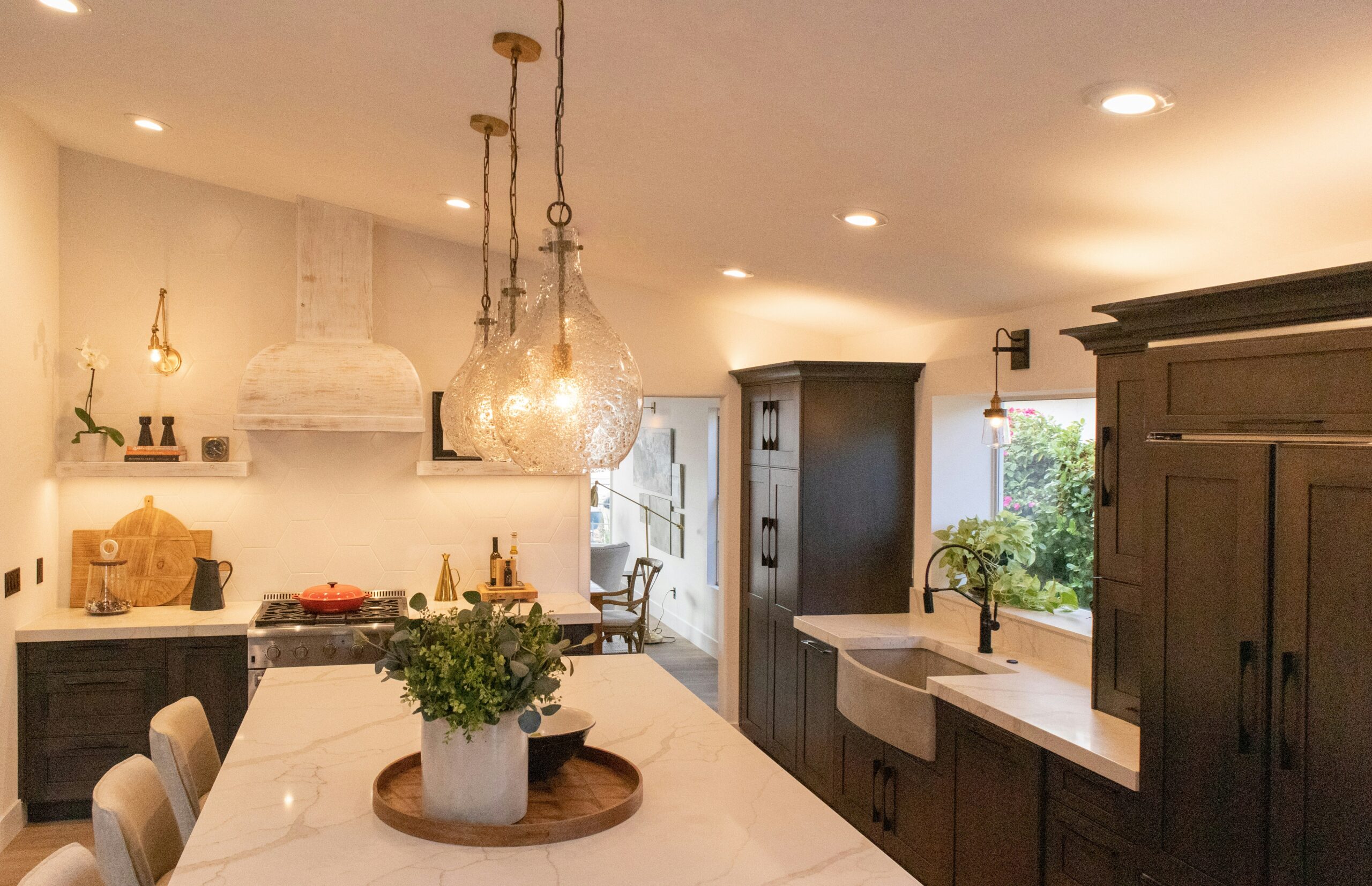1. What Are Home Additions? Exploring Different Types
Home additions span much more than simply adding a new room to your existing layout. In fact, they can be as basic as bump-outs or as extensive as adding an entire second story. Each type serves a different function and caters to a variety of lifestyle needs. Consequently, understanding the variations helps you select the one that aligns perfectly with your family’s vision and day-to-day routines. If you’re interested in learning more, visit this link to explore what a home addition truly entails. Furthermore, details such as your neighborhood’s house styles, lot size, and zoning regulations can narrow down the possibilities.
One popular option is the classic room addition, which involves extending the perimeter of your house to accommodate, for example, a larger kitchen. A more spacious kitchen often becomes the focal point of family gatherings and casual hangouts. Likewise, a new bedroom or bathroom can significantly ease morning traffic jams and enhance the overall flow of your home. Additionally, these expansions are generally simpler in design than adding entire levels, but they still require careful planning to match existing architecture and pass building codes.
Another approach is the garage conversion, which transforms an underutilized area into anything from a home office to a guest suite. People often gravitate to this concept when they’re eager to maximize existing square footage without affecting the main living quarters. However, it’s essential to address insulation, ventilation, and proper flooring to ensure the space feels comfortable throughout the year. For those who place a premium on preserving the function of their garage, a partial conversion can provide extra living space while maintaining storage for tools or equipment.
Sunrooms and enclosed porches also fall under home additions, offering a unique blend of indoor comfort and outdoor ambiance. The open, airy feel they create allows for abundant natural light and often serves as a retreat for morning coffee or relaxation. Although sunrooms might not always be considered a necessity, they certainly elevate quality of life for homeowners who enjoy a connection to the outdoors, no matter the season. In many cases, these spaces turn into beloved social hubs for hosting friends and family.
Moreover, second-story additions are a more ambitious project that instantly doubles your available space. Such extensive undertakings can accommodate multiple bedrooms, a secondary living area, or even a small apartment. Although cost and structural requirements might seem daunting, the payoff can be substantial, particularly in tight neighborhoods where expanding outward isn’t feasible. If you’re exploring second-story additions, it’s especially wise to engage a professional home additions contractor who can certify that your foundation and framing can handle the weight of an additional floor.
Bump-outs are another type of home addition that might be overlooked. They expand a particular room in your house by a few feet, providing just enough extra space for critical features like built-in cabinetry, larger appliances, or a cozy breakfast nook. While the added square footage might seem minor on paper, the day-to-day difference can be monumental, especially if you’re aiming to improve circulation and create a more open environment. Bump-outs typically require less complex permits and cost less than full additions, making them a viable option for many homeowners.
When you consider the various home addition options, think about how each type integrates into your family’s present lifestyle and future goals. For some, a second-story addition could be too large of a leap, while a sunroom might be exactly what you need to recharge and entertain. The flexibility is part of the beauty of expansions—there’s something to satisfy different tastes and budgets. Next, let’s address the popular question: do home additions add value? We’ll examine the current real estate landscape to give you a clearer picture.
2. Do Home Additions Add Value? Analyzing Market Trends in Arlington, VA
A pressing question among Arlington homeowners is, “Do home additions add value in this particular market?” Arlington, VA, is known for its stable property values, partly thanks to its proximity to the nation’s capital and highly rated local amenities. Even so, not all neighborhoods react equally to certain expansions. In communities with tighter lot sizes, adding a second level might be more appealing than extending the home’s footprint, as it can conserve yard space while still boosting living area. On the other hand, in areas with more abundant land, horizontally expanding can be a feasible and cost-effective route for homeowners.
Recent real estate trends in Arlington emphasize that well-planned additions often yield a significant return on investment when it comes time to sell. Buyers, especially families seeking modern layouts and amenities, prefer homes that can accommodate growing children, multi-generational living, or flexible work-from-home arrangements. As a result, expansions like a new in-law suite, dedicated office, or additional bathrooms frequently capture attention. Beyond resale benefits, these additions also enhance day-to-day enjoyment of the property.
Still, real estate is cyclical, and it’s crucial to evaluate long-term gains over short-term market shifts. Trends can ebb and flow, but a well-executed and thoughtfully designed renovation will maintain its worth, especially in a place like Arlington, where demand for housing tends to be consistent. Furthermore, even if you’re not intending to list your home right away, living in a more spacious environment can improve overall quality of life. Whether you’re hosting gatherings or just enjoying solitude, extra space can mean extra convenience or comfort.
Interestingly, Arlington’s zoning guidelines encourage homeowners to optimize their properties within legal bounds. It’s not uncommon for local prospective buyers to specifically seek homes that have been recently updated or include modern expansions. Therefore, if your addition aligns with contemporary trends—like an open-concept layout or energy-efficient features—you could see a premium on your listing price. However, a careless approach or a poorly executed expansion can do the opposite, diminishing your home’s appeal and deterring potential buyers.
Another critical element is the role of professional insight. Consulting with a realtor or an experienced appraiser before and after major changes gives you a more precise understanding of potential value increments. They can perform comparative market analyses that identify neighborhood-specific preferences, giving you the knowledge to tailor your addition for maximum appeal. Additionally, local contractors who specialize in Arlington VA home additions often possess inside information about which features local buyers find most desirable. This feedback allows you to focus your investment where it truly matters.
Beyond the quantitative aspects, value isn’t solely measured in dollars and cents. Many homeowners embark on home additions because they value comfort, convenience, and personalization. After all, your house isn’t just a building; it’s a sanctuary that should evolve with your changing needs. The intangible benefits—like more family bonding in a new entertainment room or a private workspace that boosts your productivity—can be priceless and enrich your daily experience.
All things considered, the short answer is that well-planned and well-executed additions usually do add value in the Arlington market. The key is to research carefully, select projects that resonate with local demand, and invest in quality workmanship. In the next section, we’ll examine the various factors that influence how much value you can actually expect to gain, from the types of materials used to the way your addition complements the existing structure.
3. Factors Influencing the Value of Home Additions
Many homeowners kick-start a renovation with high hopes and lofty ideas, unaware that multiple influences sway a project’s net worth. From architectural harmony to the quality of materials, these components collectively determine if your home addition meets or exceeds its anticipated return on investment. Understanding these factors is where planning turns from aspirational to practical. Besides, ignoring them can lead to subpar results that neither enhance your life nor impress future buyers.
Firstly, the size and scope of your addition matter. A modest bump-out won’t carry the same impact as a full-blown second-story upgrade. However, more substantial projects come with more serious financial obligations. The balance involves aligning your budget with a scope that suits your long-term needs, ensuring you don’t sink resources into unnecessary square footage. Overspending in a neighborhood of modestly sized homes may lead to diminished returns, whereas undersized additions in an upscale location might be perceived as insufficient.
Secondly, design quality and architectural consistency play a prominent role. An addition that looks like a jarring afterthought can turn off you and future buyers alike. Professionally integrating the new structure’s exterior with your existing home’s style ensures a harmonious façade. On the inside, continuity in flooring, trim, and color schemes ties the spaces together so they don’t feel disjointed. Moreover, thoughtful design extends to considering how the home flows, whether you’re blending open-concept layouts or adding quiet alcoves for relaxation.
Thirdly, the choice of materials and finishes can elevate an addition from ordinary to extraordinary. High-grade windows, energy-efficient insulation, and durable flooring may cost more initially, but they often pay dividends in comfort and resale points. For instance, prospective buyers frequently appreciate green features like LED lighting or sustainable materials that reduce utility bills. On the other hand, cutting corners with flimsy materials might require future fixes, draining resources and lowering your home’s overall appeal.
Fourthly, local market conditions have a direct impact on how quickly and significantly you recoup your investment. In a rising market, expansions can appreciate more rapidly as property values climb. However, a sudden shift in supply and demand might moderate these gains. That’s why staying informed on neighborhood developments and consulting real estate professionals can help you strategize your timing, whether you plan to sell in the near future or hold onto your home for the long haul.
Fifthly, the contractor’s expertise influences not only the final look but also how efficiently the project runs. A seasoned home additions contractor will ensure accurate permits, handle inspections seamlessly, and manage any surprises that arise during construction. Inexperienced hands might lead to delayed timelines, budget overruns, or even structural issues that cost thousands of dollars to remedy. Therefore, hiring a reputable professional who is well-versed in Arlington VA home additions is indispensable to safeguarding your investment.
Finally, personal preferences and long-term objectives shape how you perceive the success of your addition. If you’re purely focused on resale potential, you may pick projects with broad appeal, like extra bedrooms. Conversely, if you plan to remain in your home for decades, comfort and personalization can become higher priorities. In the upcoming section, we’ll discuss how to pinpoint and choose the right contractor to realize the concepts you’ve taken the time to refine.
4. Choosing the Right Arlington VA Home Additions Contractor for Your Project
Finding a reliable contractor often sets the tone for the entire renovation experience. After all, you’re entrusting them with your calm, comfort, and the vision you’ve nurtured for your home. To begin, narrow your search to contractors who specialize in Arlington VA home additions. Local expertise often translates into a thorough knowledge of relevant building codes, permitting processes, and design trends. This familiarity can help you avoid unexpected roadblocks and ensure that your project unfolds without unwelcome surprises.
Start by seeking recommendations from neighbors, friends, or local online community groups. Customer testimonials often shed light on a contractor’s project management style, attention to detail, and reliability. It’s wise to check each candidate’s credentials, including licenses, insurance, and professional affiliations. You might also want to check if they belong to organizations like the National Association of Home Builders or local trade groups, which indicates a commitment to industry best practices and continued education.
When you’ve narrowed down potential contractors, request prepared bids. Ideally, these quotes should outline labor costs, materials, estimated timelines, and any potential extras that could arise. Comparing these details across multiple providers helps you develop a baseline understanding of fair pricing. However, the lowest bid isn’t always the best choice. Sometimes, a notably low bid can indicate corner-cutting methods or subpar materials—both of which can dampen long-term project value. Indeed, it’s crucial to weigh cost against transparent communication, trustworthiness, and solid references.
Moreover, scheduling in-person or virtual consultations can give you a sense of the contractor’s professionalism. You’ll get an impression of whether they genuinely listen to your ideas, address your concerns, and provide solutions within reason. Try to gauge how comfortable you feel sharing your preferences openly. Since home additions can take weeks, if not months, you’ll want a partner who treats you as an active participant in the process, rather than just a paycheck.
Another aspect to assess is the contractor’s experience with your specific type of project. Many firms excel in specialized areas, such as second-story additions or sunroom expansions. Confirm that the professional you hire has handled similar requests and can show you a portfolio of completed jobs. Visual evidence speaks louder than words and can give you an inkling of the contractor’s range and design sensibilities. Plus, seeing before-and-after examples of expansions in homes like yours is motivational and reassuring.
The working dynamic with your contractor goes beyond the project’s basic logistics. Good contractors act as consultants, guiding you through material choices, color palettes, and layout options that harmonize with your home’s original design. If you’re someone who has had a negative contractor experience in the past, pay particular attention to a candidate’s approach to communication. Regular progress updates, itemized invoices, and timely responses to inquiries are worth their weight in gold, especially when you consider that remodeling can sometimes be stressful.
Once you’ve completed your due diligence, trust your instincts. A prepared contractor who shares your values for quality craftsmanship, transparency, and functionality is likely to enhance your overall experience. As we move on, we’ll delve into a critical topic close to every homeowner’s heart—budgeting. From the cost of permits to the price of premium finishes, our next section will guide you through financial planning for a successful home addition. Additionally, if you’re looking for inspiration, check out these master suite addition ideas for your home addition that can elevate your living space.
5. Budgeting for a Home Addition: What You Need to Know
Whether you’re envisioning a new master suite or an expanded living area, budgeting is often the cornerstone of a smooth renovation. Setting realistic financial expectations helps you maintain control, preventing nasty surprises mid-project. Yet, the process isn’t just about tallying up quotes. Instead, it’s about understanding every facet of the project—from planning and labor costs to finishing touches and potential contingency funds. By doing so, you can develop a holistic approach that aligns with both your vision and your wallet. For more guidance, check out this resource on How To Plan A Home Addition.
To get started, outline the core components of your expansion. For instance, prioritize structural work, such as foundation or load-bearing elements, because cutting corners on these aspects can jeopardize your entire addition. Next in line might be essential systems like plumbing and electrical, which must be up to code. After accounting for these items, allocate funds for finishing details—flooring, paint, cabinets, and more. Some homeowners also choose to set aside funds specifically for design fees, landscaping, and other discretionary items.
By breaking costs into distinct categories, you’ll gain clarity on which elements carry the heaviest price tags. Furthermore, this structure enables you to make strategic decisions. For example, you might realize that opting for top-tier appliances is more important to you than premium flooring. In this scenario, you could select a mid-range floor material and reallocate funds to an appliance upgrade. Alternatively, if superior insulation is your main priority, you can cut back on decorative lighting fixtures. The point is, your budget becomes a set of flexible dials rather than a fixed matrix.
Also, keep in mind that dealing with permits and inspections is part of responsible remodeling. Arlington VA home additions generally require paperwork, from site plans to building permits, all of which come with fees. Make sure those expenses are factored into your calculations to avoid any unwelcome last-minute add-ons. Similarly, certain specialized tasks like environmental testing (for older homes that may contain asbestos, for instance) can result in extra outlays. Thorough research upfront reduces the likelihood of your budget ballooning unnecessarily.
Financing options can also shape how you plan out your spending. Home equity loans, personal savings, and specialized renovation loans each present their own advantages and constraints. Some offer tax benefits, while others allow you to spread out payments over time. Speak with your financial advisor and your contractor to decide which approach best suits your situation. Knowing your financing method in advance solidifies your budget approach and often helps you negotiate better terms for materials and labor.
Additionally, a contingency reserve is something many people overlook but shouldn’t. Allocating approximately 10% to 20% of your total project cost for unexpected pitfalls can provide much-needed security. Unforeseen issues like water damage behind walls or outdated wiring once the walls are open can inflate costs. A bit of foresight in this area reduces stress and ensures you won’t have to scramble for additional funds when genuine surprises occur.
Managing finances doesn’t have to be fraught with anxiety. With proper planning, transparency from your contractor, and an adaptable mindset, you can keep your project running smoothly. By clarifying your priorities early and acknowledging the potential for hiccups, your home addition experience becomes exciting instead of daunting. Next, we’ll explore the concept of balancing quality craftsmanship and cost—two competing forces that every homeowner must reconcile as they embark on major renovations.
6. Quality Craftsmanship vs. Cost: Striking the Right Balance
When it comes to home expansions, there’s a perpetual tension between premium quality and budget constraints. One homeowner might insist on marble countertops and custom cabinetry, while another could settle for laminate surfaces and standard off-the-shelf cupboards. Both choices serve distinct needs, but the question remains: How do you decide where to splurge and where to save? After all, making every feature high-end isn’t always feasible, and skimping on essential aspects can compromise the structure or aesthetic appeal of your addition.
Quality craftsmanship goes beyond the materials. It reflects the expertise of the skilled professionals you hire. A contractor who pays careful attention to detail can make an affordable tile look luxurious by installing it seamlessly. Conversely, even the most extravagant natural stone loses its effect if laid out poorly. This is where employing an experienced home additions contractor truly impacts the final result. Besides the obvious structural concerns, well-executed workmanship creates lasting value and spares you from frequent repairs.
Furthermore, evaluating durability can help you decide where allocating larger chunks of your budget makes sense. Areas like roofs, windows, and insulation should be robust enough to withstand daily wear and the occasional extreme weather event. Ignoring these structural and energy-efficient elements might lead to escalating maintenance costs or higher utility bills down the line. By choosing proven brands and top-tier materials here, you safeguard your investment while reaping cost-savings in the form of fewer replacements.
On the other hand, purely ornamental items could be areas where modest spending is acceptable. For instance, a mid-range light fixture can still lend an elegant vibe if chosen carefully to complement the room’s theme. In a similar vein, opting for a less expensive paint brand doesn’t necessarily ruin your addition’s final look. In fact, paint is one of the easiest elements to update in the future. The wisdom lies in distinguishing essential long-term durability factors from design elements that are simpler to swap out later with minimal disruption.
In addition, involving your contractor and possibly even a designer can illuminate where you might gain more functionality or style for your dollar. They possess knowledge of newer products, cost-effective alternatives, and best practices that blend budget-friendly choices with high-end flair. Perhaps you can integrate a statement countertop in just one area, while choosing simpler surfaces elsewhere. This approach maximizes impact without draining the account. Keep in mind that balance is subjective, so weigh your personal preferences against practical considerations.
Another strategy is to rank your project priorities. Identify the top three must-haves you absolutely don’t want to compromise on—maybe that’s a spacious walk-in closet, top-grade HVAC, or an open floor plan with premium flooring. Then consider what falls into the “nice-to-have” category, such as custom moldings or high-end light fixtures. This clarity ensures you distribute funds thoughtfully. If cuts become necessary, you’ll know which elements can be scaled back without losing sight of your main objectives.
Ultimately, aiming for a sweet spot between quality and cost is more art than science. Trends come and go, and even the best materials have a lifespan. However, a carefully considered approach typically leads to a harmonious end product that enhances both daily comfort and long-term property value. As we move ahead, let’s discuss the deeper motivations behind additions—particularly, how homeowners weigh long-term comfort versus immediate resale returns.
7. Long-Term Comfort vs. Resale Value: Making the Right Decision for Homeowners
If your top concern is maximizing profit when you eventually sell, you might end up choosing additions that cater primarily to broad market demands. On the flip side, if you plan to remain in the home indefinitely, creating spaces uniquely suited to your family’s habits and needs might take precedence over immediate resale gains. Yet, it’s not always an all-or-nothing proposition. Thoughtful planning can indeed satisfy both short-term enjoyment and long-term viability.
One significant advantage to focusing on comfort is that you’ll reap daily rewards almost immediately. For instance, a tranquil master suite with an attached spa bathroom may bring immeasurable relaxation, even if it’s slightly too personal or upscale for general buyer taste. Nonetheless, many prospective buyers still appreciate high-quality bathrooms and could view it as a desirable perk if it’s seamlessly integrated into the home’s overall layout. This dual appeal underlines that personal touches don’t always undermine resale potential.
In contrast, expansions aimed purely at resale often emphasize universal appeal. These might include adding an extra bedroom—particularly valuable in areas where families frequently seek more space. Another popular example is a dedicated home office, which holds significantly higher appeal now, given the rise in remote work. These strategic additions increase your home’s perceived value in the eyes of most buyers, potentially speeding up a sale and attracting competitive offers. If you’re uncertain about which route to take, analyzing local real estate trends and talking with a knowledgeable home additions contractor can guide your decision.
Regional lifestyle factors also come into play. In some parts of the country, families value a finished basement as a game room or entertainment hub. Elsewhere, an airy, open-concept family room might be the major draw. Arlington VA home additions that combine extra interior space with a functional outdoor area might represent the sweet spot here, given that local residents often crave a blend of indoor luxury and external convenience. Anticipating these lifestyle trends can be key to forming a well-rounded addition strategy.
Still, it’s crucial to note that market preferences evolve over time. What’s popular now could become less relevant in a decade or two. That’s why it makes sense to balance market appeal with personal happiness. If you’re unlikely to relocate soon, leaning toward your personal tastes can yield years of enjoyment. Even if trends shift, a well-constructed addition can always be updated or repurposed to align with new buyer desires in the future. In other words, an addition that enhances your daily life often retains adaptable value in the long run.
Ultimately, your decision hinges on how you envision using the space for the next several years or even decades. Think about whether the addition solves persistent daily woes in your household—like cramped kitchens or lack of privacy for remote workers. Then weigh whether the design might also strike a chord with potential buyers. The synergy between personal comfort and broader appeal is where the true power of expansions lies. In our final conclusion, we’ll bring together all these considerations, so you can confidently answer the question: do home additions add value and is it worth your time and money to invest in them?
Conclusion: Investing Wisely in Your Home With Additions
Every homeowner’s situation is unique, but the question remains: do home additions add value to your property? The short answer is yes, provided you plan and execute them properly. By thinking through the scope, consulting local experts, and balancing your budget with quality craftsmanship, you set yourself up for both short-term enjoyment and long-term gains. Arlington VA home additions that align with local market demands tend to fetch significant interest and yield substantial return on investment. However, the greatest payoff might be intangible—a home that’s genuinely tailored to your family’s needs, from morning routines to special occasions. As you move forward, remember that a dependable home additions contractor will be your partner in ensuring your vision becomes a stress-free reality. So plan thoughtfully, invest wisely, and enjoy the comfort and value that a well-designed addition can bring.
